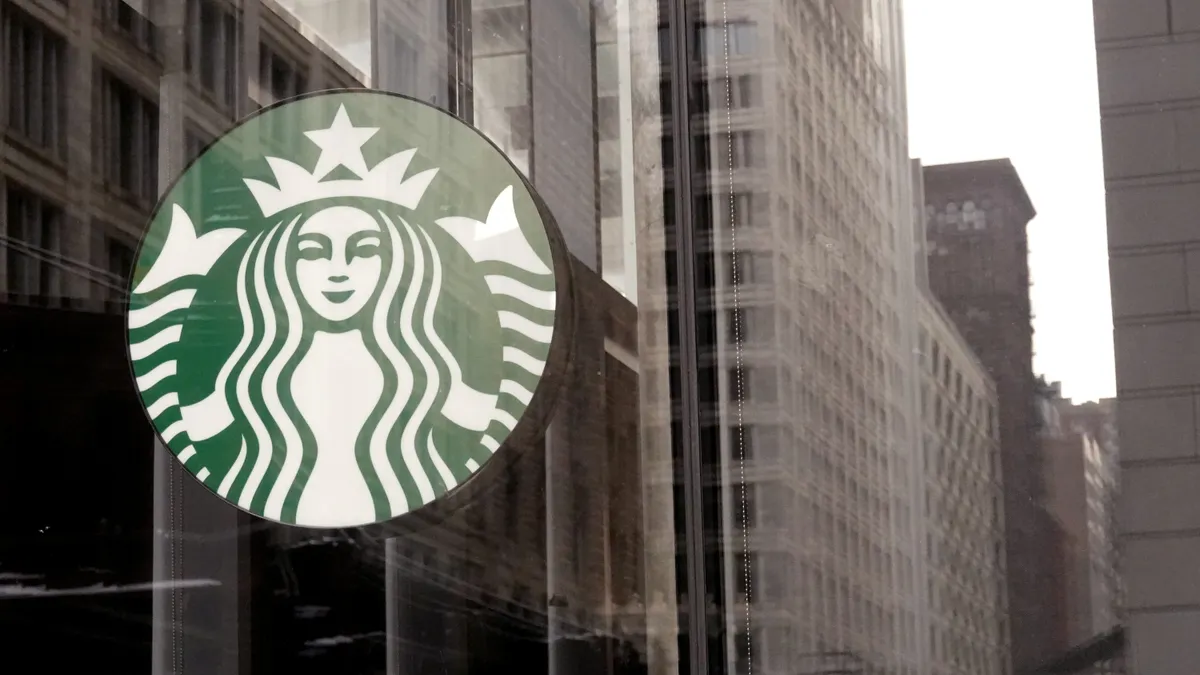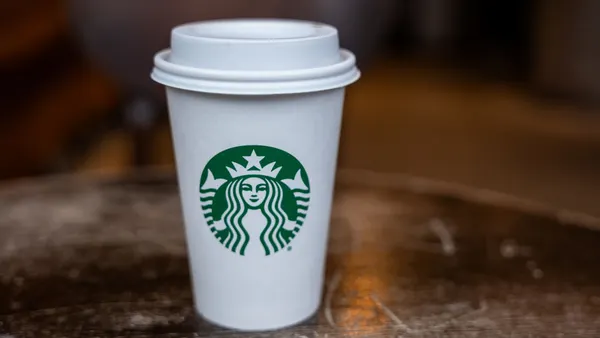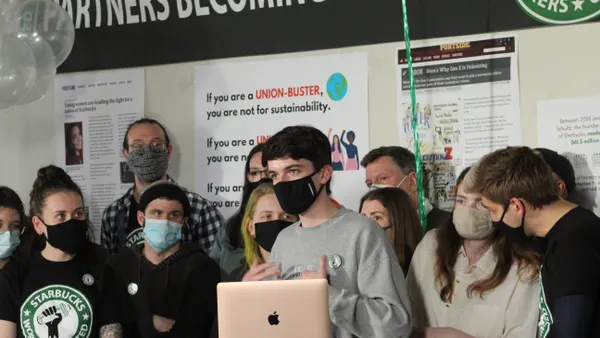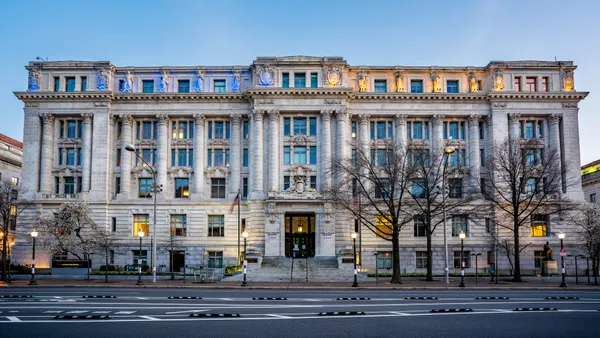Dive Brief:
- Starbucks highlighted policies intended to keep workers safe Monday in a letter to employees from Debbie Stroud and Denise Nelson, SVPs of U.S. operations, after the chain decided to permanently close 16 stores over safety issues.
- On July 31, Starbucks will permanently close six stores in the Los Angeles market, six in Seattle, two in Portland, Oregon, one in Philadelphia, and one in Washington, D.C. Two of the stores closing in Seattle have voted to unionize, and one of the stores in Portland has petitioned for a union election, Starbucks spokesman Reggie Borges said.
- In recent months, Starbucks executives have spoken to workers across markets to assess needs and safety concerns, emphasizing available safety trainings.
Dive Insight:
These closures come a month after Starbucks interim CEO Howard Schultz said at a conference in Washington, D.C. that the coffee chain may need to change its open bathroom policy due to safety concerns. The policy has been in place since 2018.
Borges declined to disclose the specific problems that were raised by incident reports and employee feedback on the stores that face closure, but said Starbucks permits managers to close restrooms to members of the public if they perceive open restrooms to be a safety issue. The Wall Street Journal reports that some of the incidents involved drug use.
“Looking at incident reports in our stores through the pandemic, these 16 stores really stood out as stores that make it really, really challenging to create a safe and welcoming environment,” Borges said.
The closures aren’t motivated solely by in-store incidents, Borges said, adding that issues outside the cafes also played into Starbucks’ decision to shutter the units.
“In-store incidents, obviously create a certain level of risk,” Borges said. “It could be the location at the stores, and it could be the community that it's in; it could be the nature of the environment that the store is located in.”
Starbucks only closes stores, Borges said, when it concludes that none of its policies or changes to operations and layout are likely to resolve ongoing safety issues. When the chain learns of such problems, the company may try “adjusting store formats, furniture layouts, hours of operation, staffing, or testing store-specific solutions like restroom occupancy sensors, new alarm systems, Lyft at Work, or partnering with local Outreach Workers,” Stroud and Nelson wrote.
With about 9,900 corporate stores in the U.S. and Canada, Borges said it was standard for the company to close some number of stores in a given period, including for safety issues. Starbucks will work with employees at impacted stores that have unionized or petitioned for a union election to ensure they are relocated to nearby cafes with comparable wages and benefits, Borges said.










